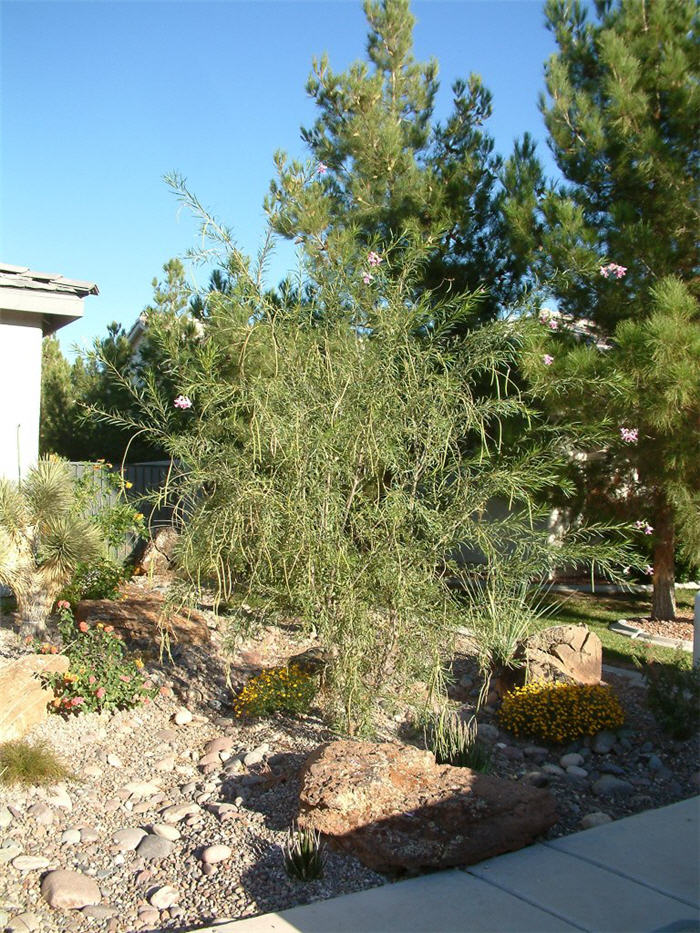| Botanical Name: Chilopsis linearis | |
| Common Name: Desert Willow; Desert Catalpa |

-
Anatomy
-
Culture
-
Design
Plant Type
Tree, Shrub
Height Range
12-25'
Flower Color
Lavender, Pink, White
Flower Season
Spring, Summer
Leaf Color
Green, Light Green
Bark Color
Green, Grey
Fruit Color
Brown
Fruit Season
Summer, Fall
Sun
Full
Water
Very Low, Low
Growth Rate
Moderate
Soil Type
Sandy, Clay, Loam, Rocky
Soil Condition
Average, Poor, Well-drained, Dry
Soil pH
Neutral, Basic
Adverse Factors
n/a
Design Styles
Meadow, Mediterranean, Ranch, Spanish, Native Garden
Accenting Features
Fragrance, Multi-trunk Tree, Showy Flowers, Specimen
Seasonal Interest
Summer
Location Uses
Background, Shrub Border, Foundation, Patio, Walls / Fences
Special Uses
Screen, Wind Break, Fire Resistant, Naturalizing
Attracts Wildlife
Hummingbirds
Information by: Stephanie Duer
Photographer: Mountain States Nursery
Photographer: Mountain States Nursery
-
Description
-
Notes
Desert Willow is a small, deciduous tree with shrubby inclinations. It grows about 15 to 25 feet tall and nearly as wide, with an open, though twiggy appearance. New bark is green, becoming brown and shaggy as it ages. Leaves are fine-textured, long and narrow, and willow-like. Remarkable, orchid-like flowers of white and pink appear in late spring and continue, to a lesser extent, all summer. It can be pruned as a multi-stemmed, low canopied tree or left more shrubby. There is a specimen at the Greater Avenues Water Conservation Demonstration Garden.
Grow in full sun in well-drained, loose soils; cannot tolerate overwatering. Cold hardy to -15F once established, but may experience some die-back in particularly hard winters or as it establishes. It does, however, thrive with reflective winter heat, so siting it against a south, west, or even east facing wall can help it over-winter. Flowers on new wood and so pruning, if necessary, ought to occur afterwards. It is quite xeric and requires no supplemental watering after establishment; however, a monthly soak will encourage better flowering.